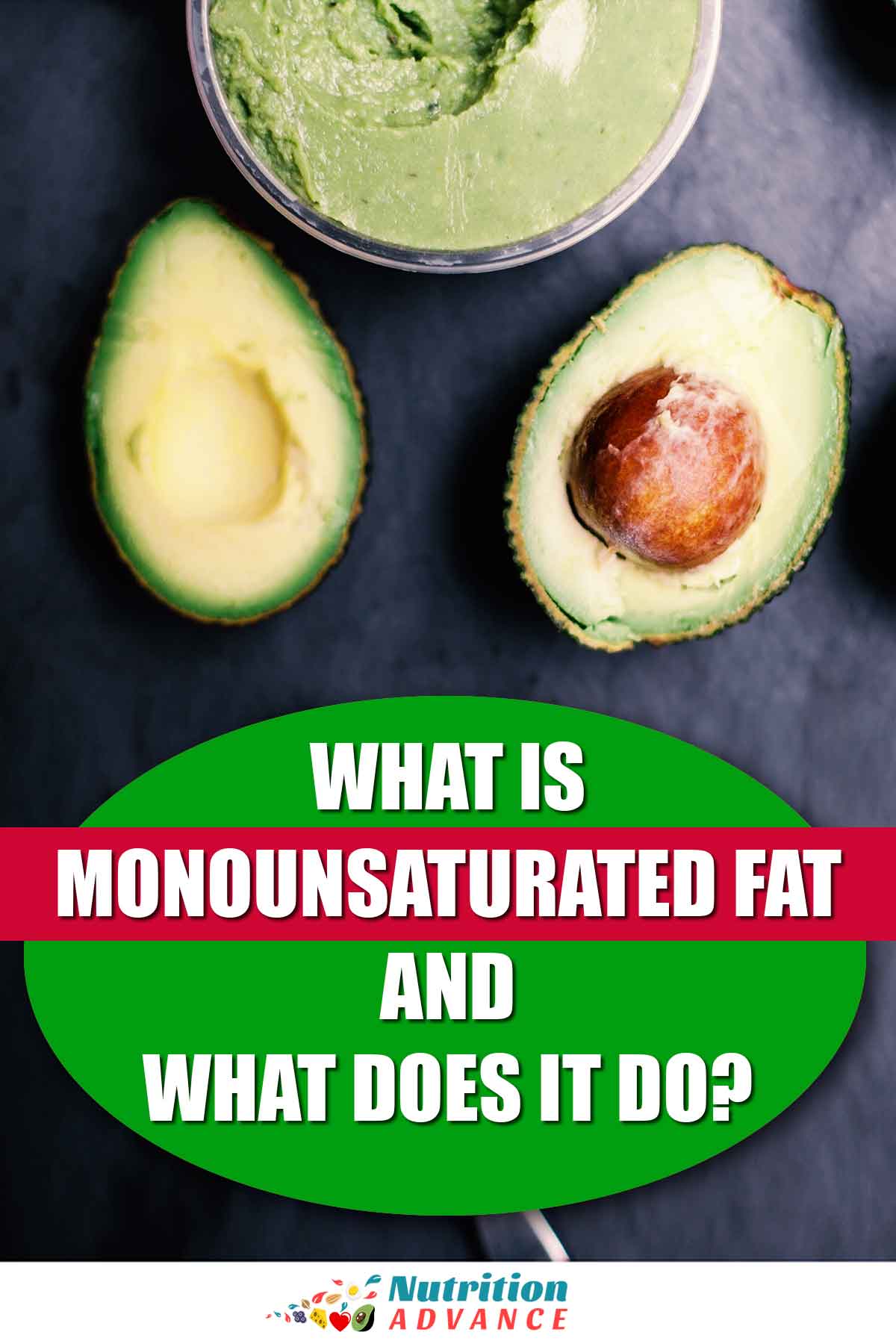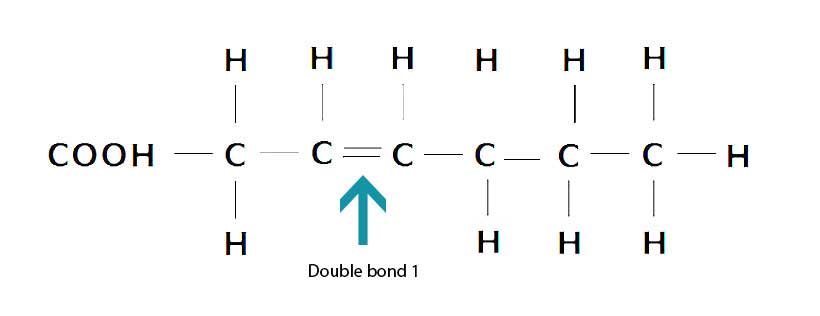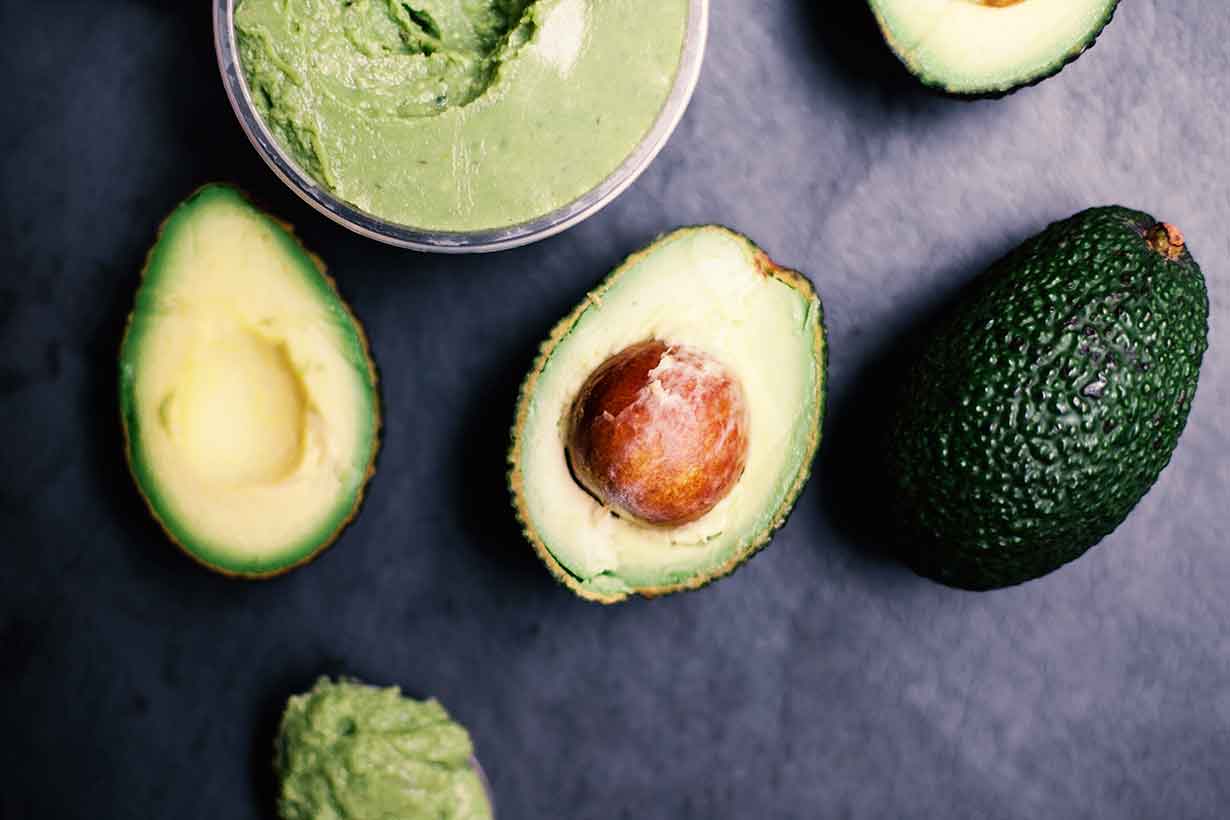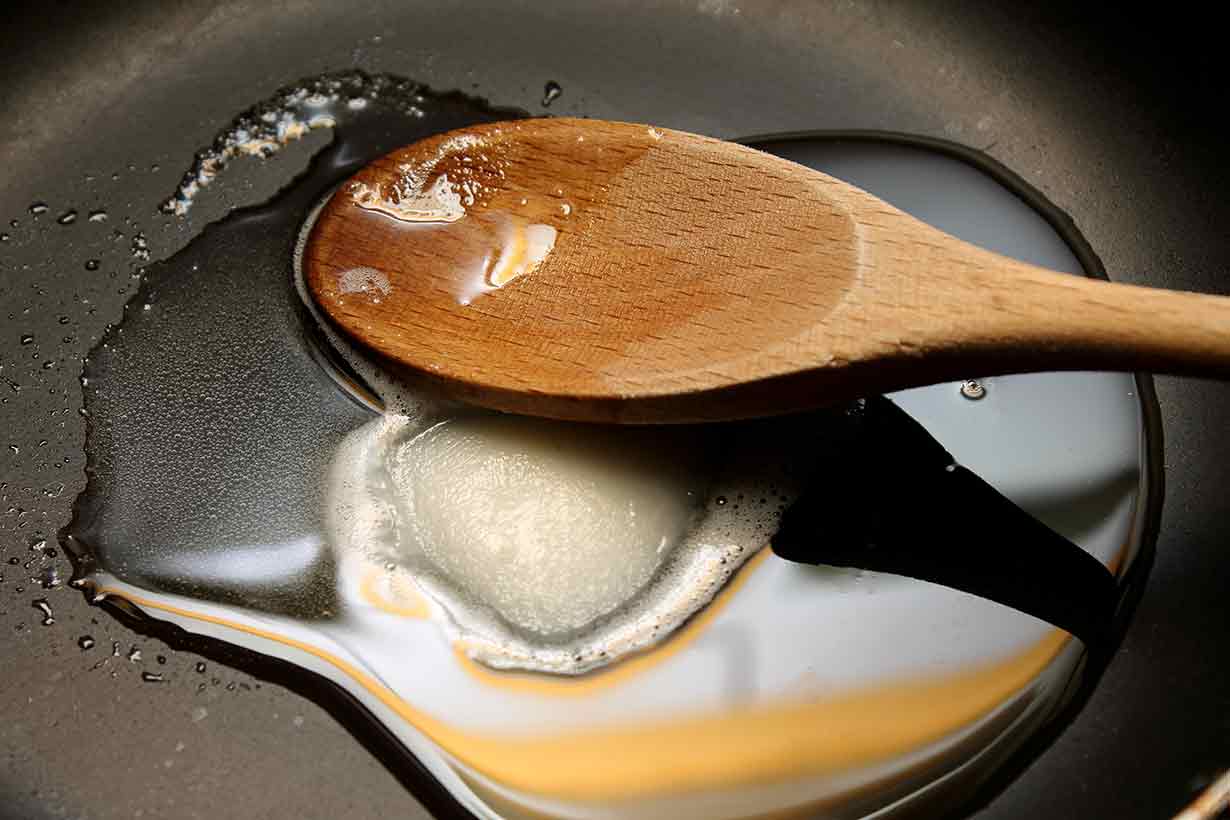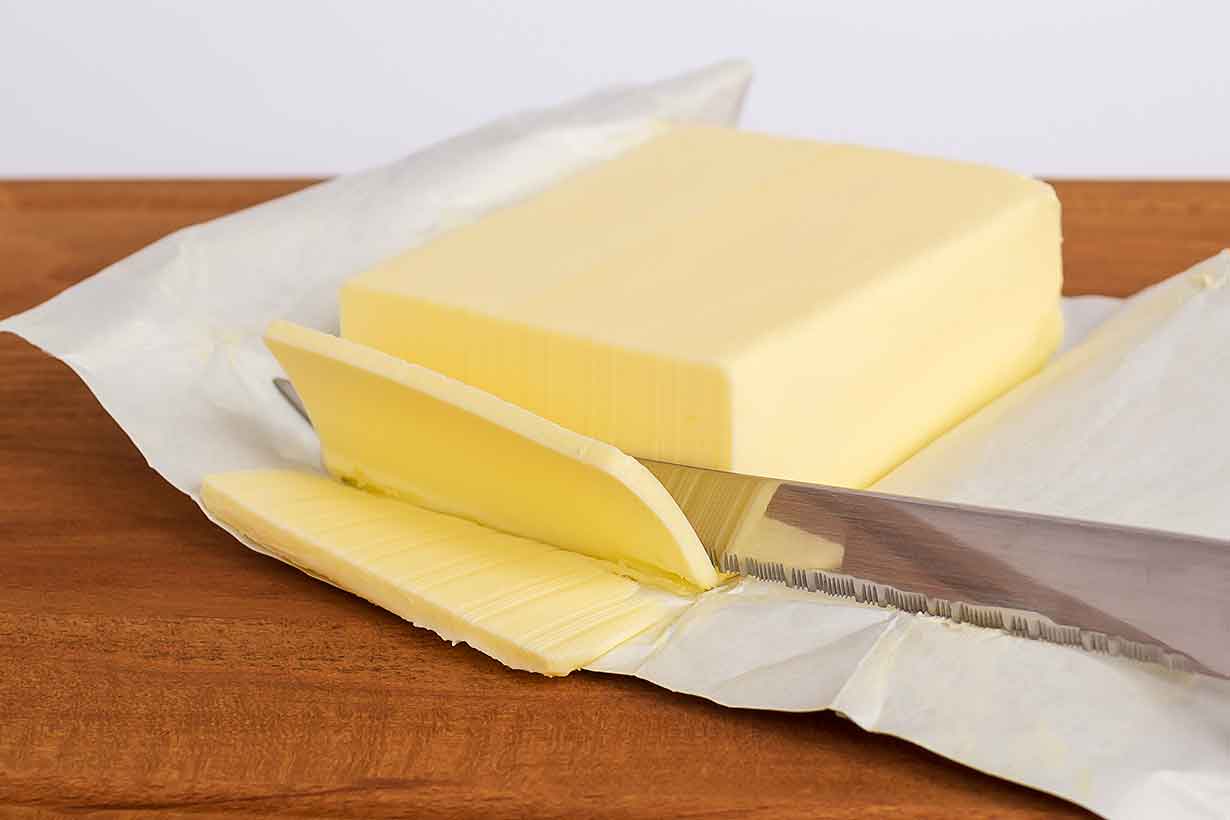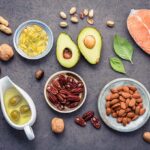What Is Monounsaturated Fat and Does It Have Benefits?
Monounsaturated fat has a healthy reputation, and food sources—such as avocados and olive oil—are widely praised for their benefits.
However, just what are monounsaturated fatty acids, and do they have any health benefits?
This article explains what this type of fat is, its potential benefits, and where we can find it.
What Is Monounsaturated Fat?
Monounsaturated fat is one of the three main types of fat alongside saturated and polyunsaturated fat.
You may also hear this fat referred to as monounsaturated fatty acids (or by the acronym of MUFA).
First of all, “mono” means one, and this signifies that monounsaturated fatty acids only have one double bond in their carbon chain.
To illustrate this, the diagram below shows the chemical structure of a monounsaturated fatty acid;
As you can see, there is a double bond between two carbon (C) atoms instead of those carbon atoms being bound to hydrogen (H).
Therefore, not all the carbon atoms are saturated—or surrounded by—hydrogen atoms due to this double bond.
As a result, the above diagram shows a “mono” (one double bond) unsaturated fatty acid, otherwise known as monounsaturated fat.
In contrast, saturated fats contain no double bonds, and polyunsaturated fats (“poly” = many) have multiple double bonds.
The more saturated a fatty acid is, the more resistant it is to oxidation. For this reason, monounsaturated fatty acids are relatively resistant to lipid oxidation compared to polyunsaturated fatty acids (1, 2, 3, 4).
Monounsaturated fatty acids have a liquid consistency at room temperature but become partially solid when refrigerated.
List of Monounsaturated Fatty Acids
There are many different monounsaturated fatty acids, and the table below shows the names, structures, and IUPAC chemical names for each one (5, 6);
| Common Name | Chemical Name | Structure |
|---|---|---|
| Caproleic acid | dec-9-enoic acid | 10:1 (n-1) |
| Lauroleic acid | (Z)-dodec-9-enoic acid | 12:1 (n-3) |
| Myristoleic acid | (Z)-tetradec-9-enoic acid | 14:1 (n-5) |
| Palmitoleic acid | (Z)-hexadec-9-enoic acid | 16:1 (n-7) |
| Oleic acid | (Z)-octadec-9-enoic acid | 18:1 (n-9) |
| Elaidic acid | (E)-octadec-9-enoic acid | 18:1 (n-9) |
| Vaccenic acid | (E)-octadec-11-enoic acid | 18:1 (n-7) |
| Petroselenic acid | (6Z)-Octadec-6-enoic acid | 18:1 (n-12) |
| Gondoic acid | (Z)-Eicos-11-enoic acid | 20:1 (n-9) |
| Gadoleic acid | (9Z)-9-Icosenoic acid | 20:1 (n-11) |
| Erucic acid | (Z)-docos-13-enoic acid | 22:1 (n-9) |
| Brassidic acid | (E)-docos-13-enoic acid | 22:1 (n-9) |
| Nervonic acid | (Z)-tetracos-15-enoic acid | 24:1 (n-9) |
Regarding the structure of each fatty acid, the number on the left refers to how many carbon atoms the fat has.
The next number (1) represents the number of double bonds, which is always one for monounsaturated fatty acids.
Finally, the (n-) number signifies the position of the double bond.
For instance, oleic acid—18:1 (n-9)—has eighteen carbon atoms, one double bond, and it is an omega-9 fatty acid.
Among the monounsaturated fatty acids listed above, the most commonly-occurring fatty acid in food is oleic acid. Oleic acid is the most prevalent fatty acid in nature, and most fat-containing foods have a high oleic acid content (7).
Monounsaturated Fat Has Several Health Benefits
Research suggests that monounsaturated fatty acids may have a positive impact on our health.
1) May Improve Markers of Cardiovascular Risk Such as the Lipid (Cholesterol) Profile and Blood Pressure
Several studies have investigated the potential impact of monounsaturated fat on the lipid (cholesterol) profile.
In a randomized trial featuring twenty-six patients with type one diabetes, participants followed a high monounsaturated fat diet (17-20% monounsaturated fat) for two months (8).
At the end of the study period, there were small decreases (-7%) in LDL cholesterol and total triglycerides (-18%).
Furthermore, a study of 124 individuals with type 2 diabetes examined the impact of various diets over one year.
In this study, 43 of the participants followed a diet composed of 20% monounsaturated fat for 12 months (9).
After 12 months, the results showed;
- Average weight loss of 4 kilograms
- A (very slight) drop in blood pressure
- Small reduction in LDL (104 mg/dl to 101 mg/dl)
- A 10% increase in HDL (42 mg/dl to 47 mg/dl)
- Moderate decreases in fasting blood sugar (150 mg/dl to 142 mg/dl)
Additionally, a systematic review of 24 studies featuring 1460 participants with type 2 diabetes found that, compared to high carbohydrate diets, a diet high in monounsaturated fat “led to significant reductions” in blood glucose, triglycerides, and systolic blood pressure, and “significant increases” in HDL cholesterol (10).
2) Monounsaturated Fatty Acids May Improve Insulin Sensitivity
Some research suggests that monounsaturated fat may have a beneficial effect on insulin sensitivity.
First of all, epidemiological (observational) studies show that higher monounsaturated fat intake is associated with better insulin sensitivity (11).
Also, a systematic review and meta-analysis of randomized controlled feeding trials appears to support these associations.
The results of this review demonstrated that replacing carbohydrate with monounsaturated fat (12);
- Slightly reduced HbA1c
- Reduced postprandial (after meal) insulin levels
- Lowered HOMA-IR, a marker of insulin resistance
However, it is worth noting that replacing carbohydrates with polyunsaturated fatty acids had a more significant effect.
In addition, a randomized trial featuring 162 healthy participants found that increasing monounsaturated fat intake at the expense of saturated fat may improve insulin sensitivity (13).
3) May Help To Reduce Inflammation
Some small studies suggest diets that are rich in monounsaturated fatty acids may have anti-inflammatory benefits.
Generally speaking, these effects seem to be most significant when replacing saturated fat or refined carbohydrate (14, 15).
However, it is important to note that these effects may be more related to the actual sources of the fat rather than the fatty acids themselves.
For instance, the comparison mentioned above between saturated fat and monounsaturated fat was based on mixing various types of oil into food (14).
This does not mean that monounsaturated fatty acids don’t have anti-inflammatory effects, but it also doesn’t tell us how whole food sources of these fatty acids—how people actually eat—would compare.
Some of the research is also conflicting, and not all studies support the idea of monounsaturated fat lowering inflammatory markers (16).
That said, research into oleic acid, the most common monounsaturated fatty acid, suggests that it may have anti-inflammatory properties (17).
4) Other Potential Benefits
Research suggests that monounsaturated fatty acids could have several further benefits.
These prospective benefits include being supportive of weight loss and potentially reducing the risk of certain cancers, such as prostate cancer (18, 19, 20).
However, there is only weak (and inconsistent) evidence in these areas, and more research is necessary.
What Foods Contain Monounsaturated Fat?
Different foods contain varying ratios of fatty acids.
However, there is a wide range of foods that provide significant amounts of monounsaturated fatty acids.
These foods include various plant-based foods, including nuts and seeds and different types of cooking oil.
Interestingly, despite the widespread belief that meat is solely saturated fat, monounsaturated fat—in the form of oleic acid—is the predominant fatty acid in meat (21, 22).
Various animal foods, including meat and fish, are good sources of the fatty acid.
Here are ten foods that offer particularly high amounts of monounsaturated fat;
- Olive oil
- Avocado
- Macadamia nuts
- High oleic sunflower oil
- Beef
- Goose fat
- Hazelnuts
- Pecans
- Almonds
- Pork
Are There Any Drawbacks of Monounsaturated Fat?
Firstly, there is nothing explicitly wrong with monounsaturated fatty acids.
However, like all dietary fats, it is possible to over-consume them, particularly when consuming large amounts of oils.
Other than this, the main food sources of monounsaturated fat are generally healthy and nutritious with additional benefits of their own.
Final Thoughts
To recap; monounsaturated fatty acids are more prevalent than both saturated and polyunsaturated fats.
There are many different monounsaturated fatty acids, and the most common (and researched) of these is oleic acid.
Some of the primary food sources of these fats are avocados, meat, nuts, and olives.
Lastly, the bulk of the evidence suggests that monounsaturated fat can have various benefits for our health.

